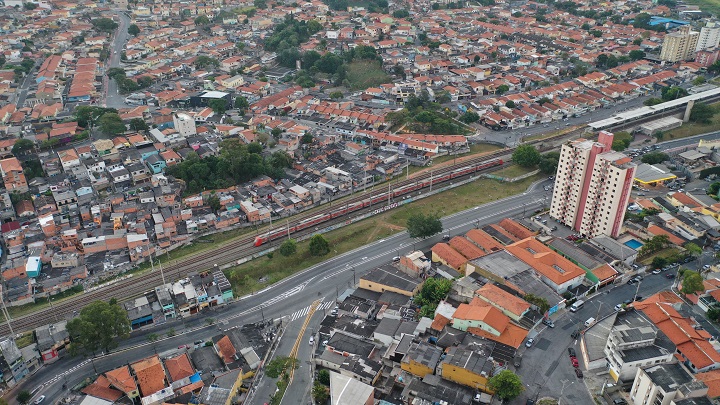
The lack of access to electricity, transportation, internet connectivity, healthcare, potable water, and other vital services and infrastructure can severely handicap communities in several ways. Without the right level of infrastructure development, communities will experience reduced quality of life, poor health outcomes, and financial instability. Additionally, inhabitants of underserved communities lack the opportunities needed to become self-actualized individuals.
Needless to say, systemic improvements within these communities are contingent on infrastructure development. In the Philippines, the national government, local government units, businesses, and members of communities themselves all share responsibilities in improving local infrastructure. Working together, these various stakeholders can influence and decide different aspects of local infrastructure policy. For example, private sector partners like Aboitiz InfraCapital cooperate closely with the national government, local government units, and individual communities in delivering infrastructure development services.
In practical terms, however, devising infrastructure policy can be contentious due to the high costs and challenges often involved. In particular, deciding where and how to allocate limited resources for infrastructure development is often a politically fraught and controversial process.
In this short guide, we’ll look into the most common factors that determine infrastructure investment priorities in underserved areas.

1) Population Density
Generally speaking, communities with larger communities tend to be prioritized for infrastructure development services, as even modest investments in these areas may serve more people compared to similar investments in less densely populated areas. Additionally, areas with larger population densities may have more voting power compared to similar-sized but less densely populated places, positively influencing the likelihood of infrastructure prioritization.
Additionally, underserved communities with large populations may also attract certain types of private infrastructure investments. Economic estates, for example, tend to require large labor pools and may thus be drawn to densely populated areas as an affordable source of labor inputs. Similarly, retail businesses that want to tap into the market represented by the community may move in, which may further incentivize the development of more infrastructure to support commercial activity.
2) Immediate Needs
Infrastructure is not a binary concept where communities can only have it or lack it. Many underserved communities may have functioning infrastructure, albeit of poor quality or insufficient quantity. While it is important to serve the needs of these populations, other communities may be completely lacking in even basic pieces of infrastructure.
For instance, broadband internet coverage is still uneven throughout much of the Philippines, with some communities having adequate service, others having slow or intermittent connections, and others still having no internet connectivity at all. Fortunately, tower-sharing projects such as Aboitiz InfraCapital and Partners Group’s Unity Digital Infrastructure are now making it feasible to not only serve previously unconnected communities but also increase data capacity for those that have inadequate service.
3) Economic Activities and Opportunities
Underserved communities that are experiencing an increase in economic activity or exhibit potential for future economic growth are likely to see infrastructure developments fast-tracked in their area. To reduce economic friction from transportation and other costs, locally based businesses may lobby policymakers to prioritize local public infrastructure or, if they are large enough, facilitate the construction of infrastructure assets themselves.
For instance, Aboitiz InfraCapital, as one of the Philippines’ largest infrastructure developers, is currently aiming to enhance several regional airports. This is due to the high unmet demands of several regional hubs for air travel. When completed, these projects will not only allow for higher volumes of air traffic but will also allow previously underserved parts of the country to better develop their potential in tourism, services, and other locally relevant industries.
4) Sustainability
The need to preserve existing resources has become an increasingly common theme when discussing infrastructure development in the Philippines, particularly concerning freshwater resources. The Philippines is currently contending with multiple threats to its water security, including increased demand, inefficient agricultural practices, and aging water infrastructure.
These threats have necessitated approaches to water infrastructure developments that aim to conserve increasingly scarce freshwater supplies. In Davao City, the Apo Agua Infrastructura project addressed a long-standing water supply shortage by supplementing the city’s over-tapped underground reserves with clean water sourced through the Tamugan River. In other parts of the country, environmentally conscious service providers such as Balibago Waterworks System are meeting sustainability challenges with a combination of technology and cutting-edge practices.
5) Funding
Funding challenges are among the most complex when it comes to determining investment priorities. If the cash is unavailable, it is often impossible to even get started on infrastructure projects, regardless of how necessary they are.
Communities, therefore, have to consider different options for infrastructure funding, including private investments, public-private partnerships, foreign aid, and publicly funded grants. In the Philippines, public-private partnerships with established conglomerates are now increasingly being leveraged to enable infrastructure development in underserved communities, particularly in the countryside.
Fighting Inequality in Philippine Infrastructure Development
Despite the Philippines’ status as a rising middle-income economy, the benefits of its economic growth have not been felt in the same way throughout the country. As a result of rapid economic growth far outpacing the distribution of newfound prosperity, underserved Filipino communities are now at a crossroads, as a continued lack of development may leave them even further behind.
Infrastructure investments in underserved communities are a must, not only because all Filipinos are entitled to basic services but also because the country’s future stability hinges on developing an equitable society. While it will be a complex undertaking that requires participation from all sectors, it is one worth doing for the sake of a more united, prosperous, and economically just Philippines.

